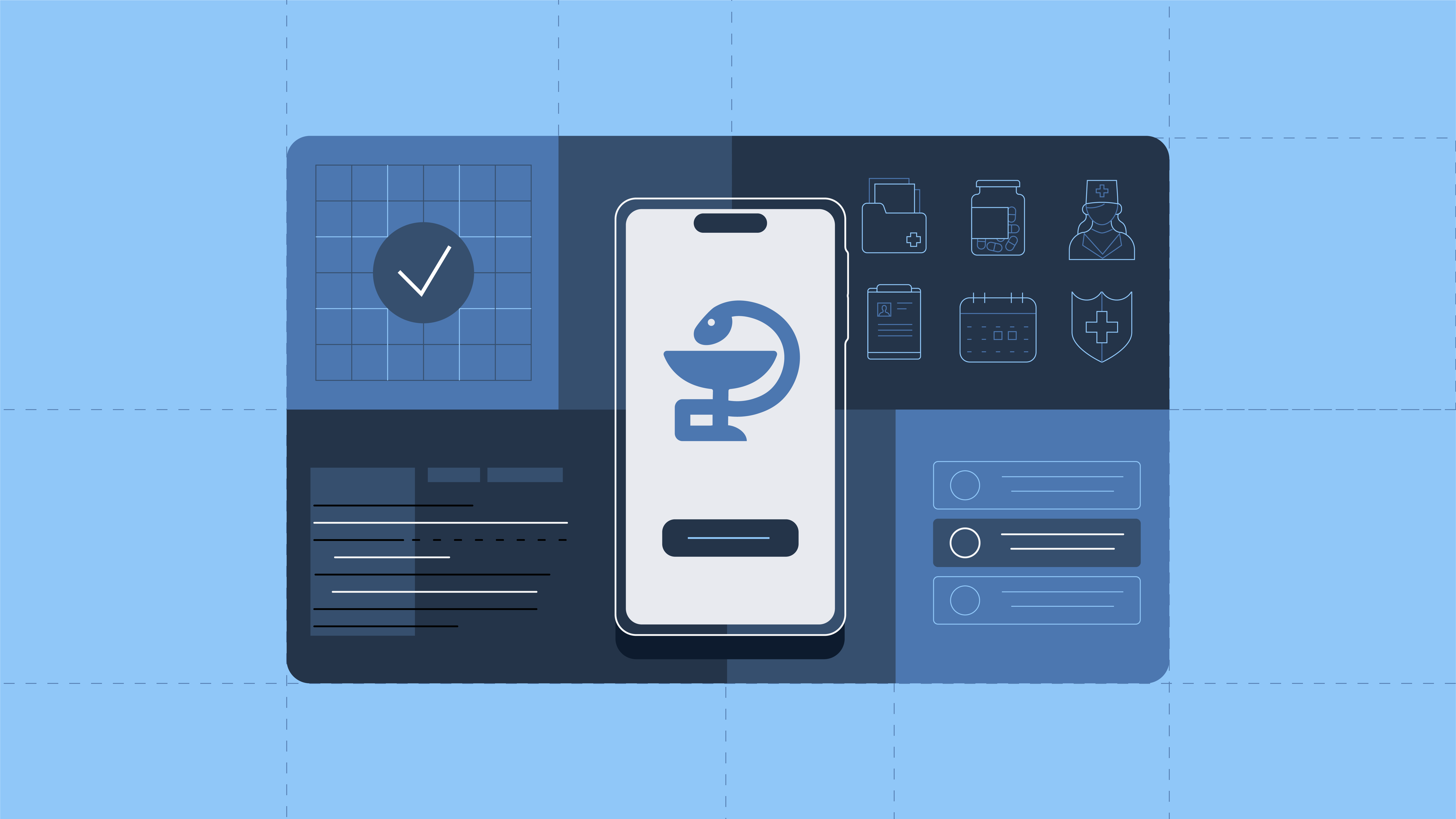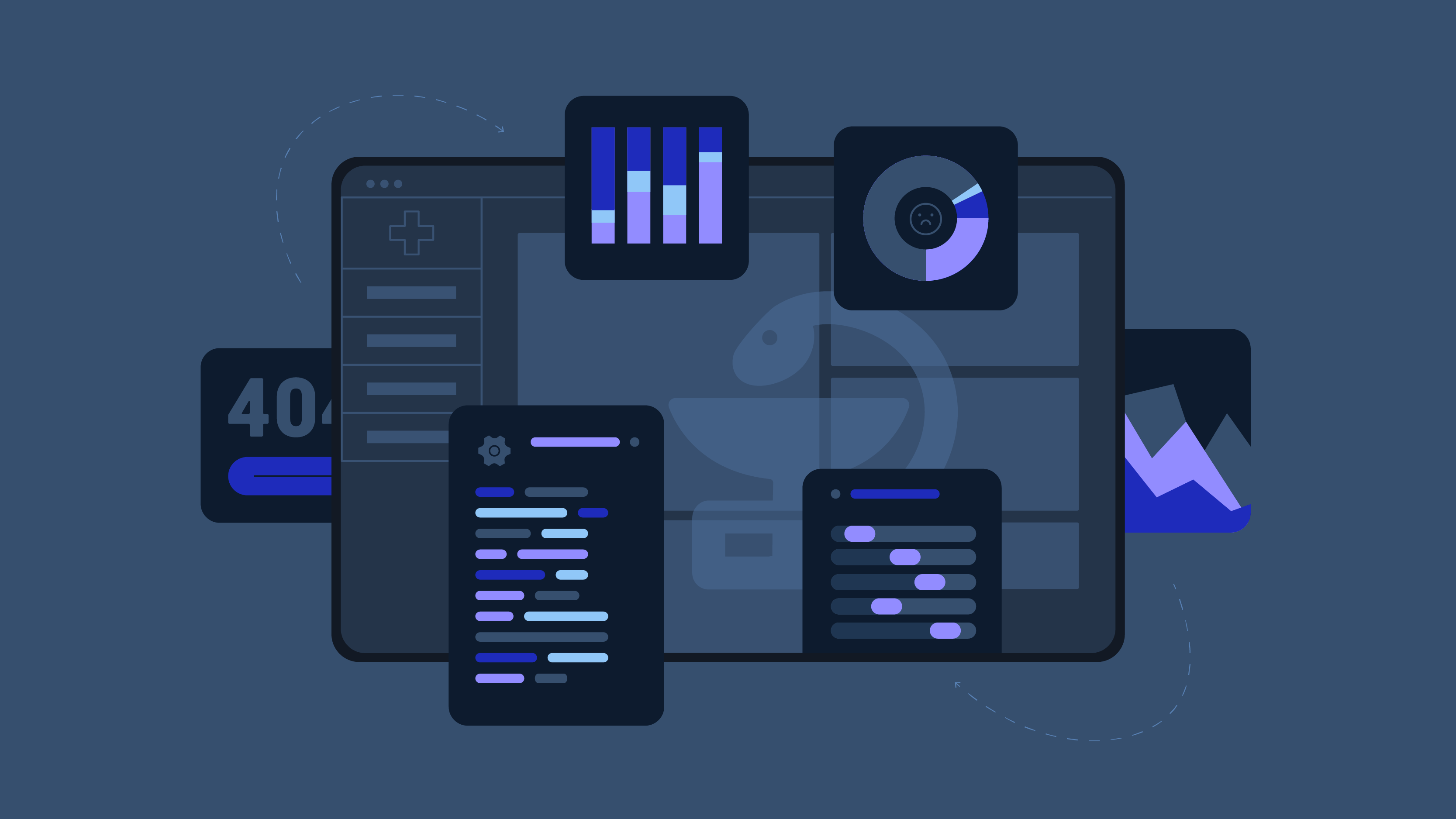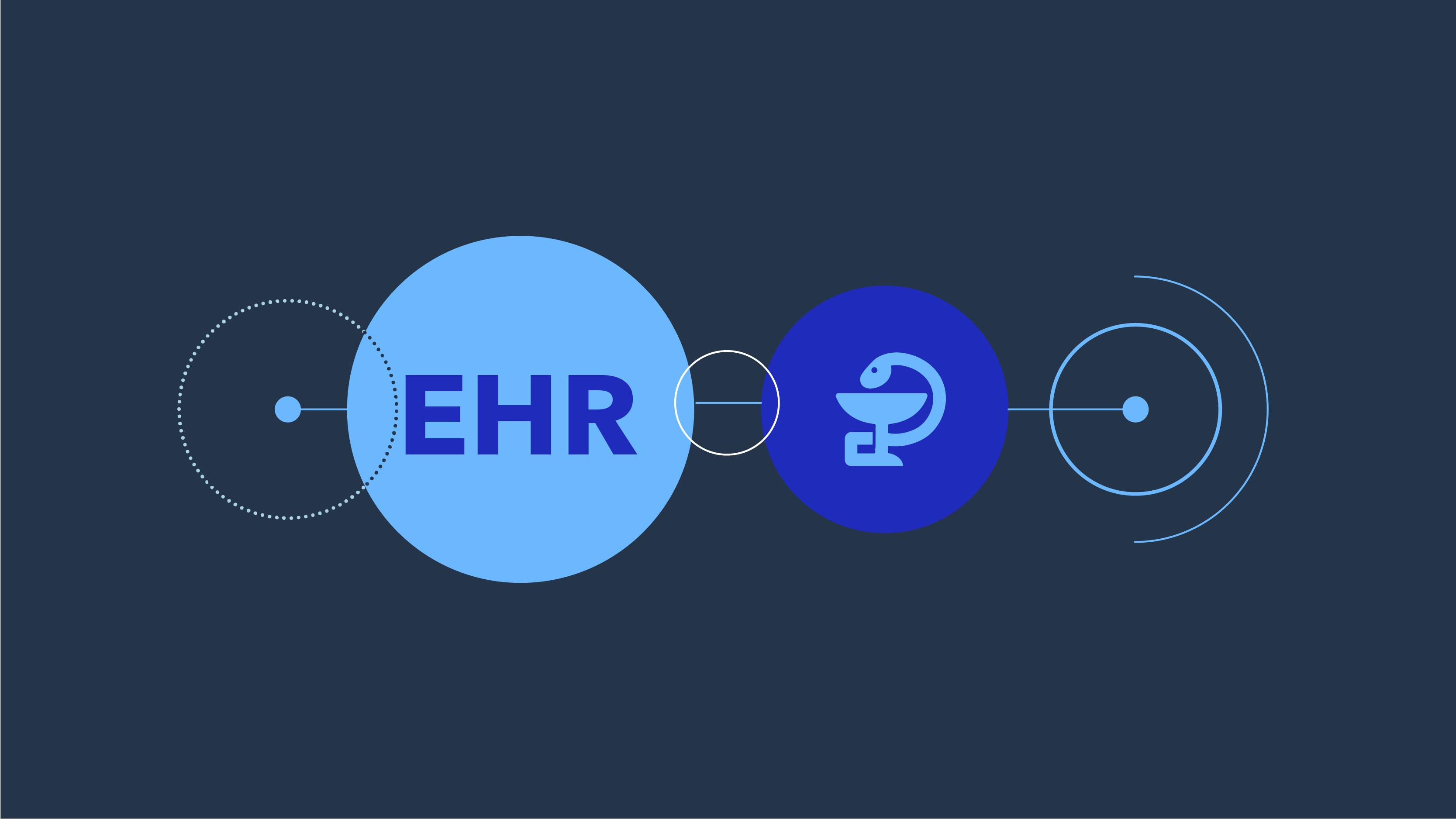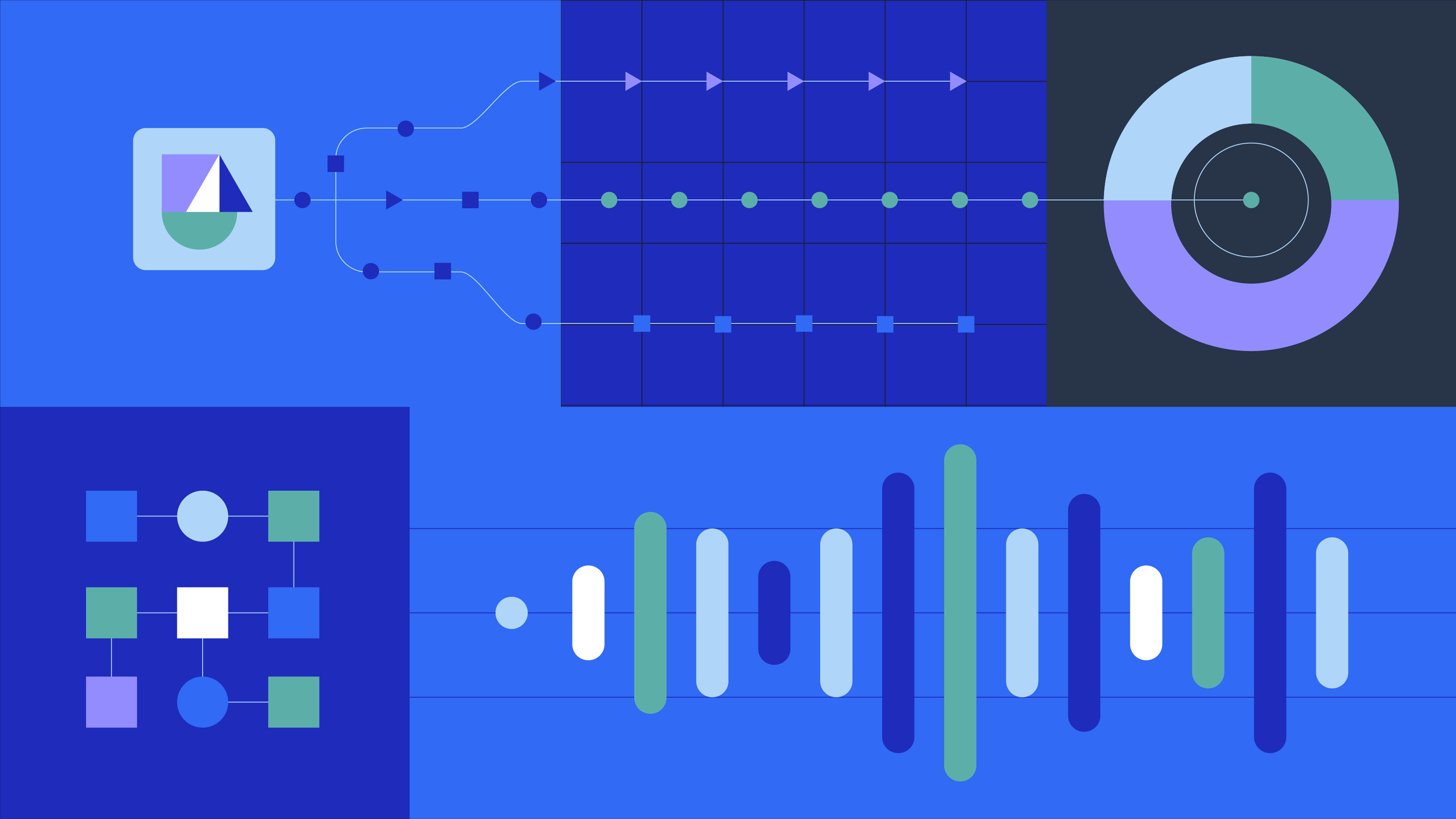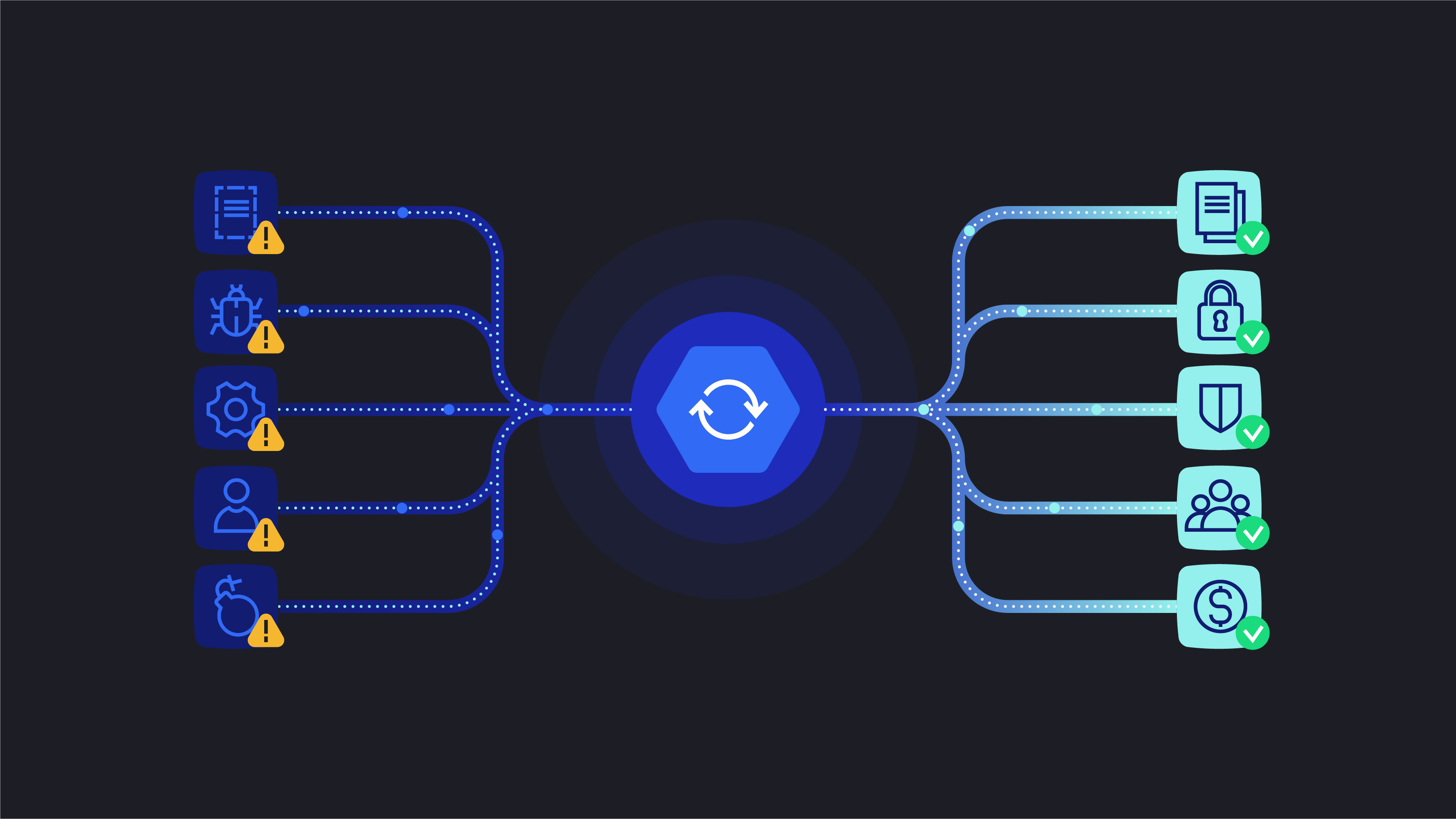The digital technologies market is filled with hundreds of new, unique technological solutions, but only dozens of them are actively used and have their own communities. The reason is that a certain technology cannot always meet the specific needs of the product.
A suitable tech stack is often a pearl at the bottom of the ocean that can only be seen with experience and guidance. At the same time, its choice is almost the most important decision for the development of a startup.
In our new article, we will try to understand what the best tech stack should be and how to find this “pearl.” We will also take a quick look at the main types of technology sets, their features, and challenges.
What is a Tech Stack?
In two words, tech stack, or technology stack, is a blend of programming languages, frameworks, platforms, tools, UX/UI solutions, and various technologies crucial for comprehensive web, mobile apps, or software development.
These are the foundational elements that power the creation and functionality of applications. This combination of technologies acts as the backbone, determining the efficiency, scalability, and overall success of a software project.
What Are the Key Components of a Tech Stack?
The key components of the tech stack include:
Frontend technology
Frontend technology comprises tools, programming language and technologies responsible for crafting the user interface (the part of the application with which end-users interact directly).
This is a very important part of the tech stack for startups because it is the first thing your user sees and pays attention to. If this point is not defined correctly, there is a huge risk of losing the audience who, due to inconvenience and irrelevance, simply will not get to use the functionality of the product.
In addition to the programming language and developer tools, it includes all the technologies and best practices of UI/UX design. Here, designers think through all actions and intentions of users in advance and create a map of their movement through the product and principles of intuitive use of features. In addition, this tech stack helps ensure product accessibility and inclusiveness.
Examples of such tools are HTML, CSS, JavaScript, React, Angular, Vue.js, Blazor, Oqtane, etc.
Essential aspects of frontend technology:
- User interface (UI) development – creation of the user interface, determining how users interact with the application and perceive its visual elements.
- Responsive design – ensuring that applications adapt seamlessly to various devices and screen sizes, providing a consistent experience across platforms.
- Client-side scripting – frontend scripting programming language, often JavaScript, enables code execution on the user’s device, improving interactivity and dynamic content.
- User experience (UX) design – frontend technology collaborates with UX design principles to create an intuitive and enjoyable experience for users.
Frontend part of the tech stack for startups determines how users interact with an application, creating everything from button clicks to form submissions. It is responsible for presenting data and content in a visually appealing and easily understandable manner.
Backend technology
Backend technology is a part of a startup tech stack that includes specific programming languages, frameworks, platforms, and tools for server-side development. It manages the application’s logic, databases, and server operations. All of these are unseen by end-users but are significant for smooth and comfortable product operation.
Examples of such tools are Node.js, programming language Python, Ruby on Rails, Java, PHP.
Let’s take a look at key aspects of backend technology.
- Server-side logic – handles the server-side logic, executing processes that users don’t directly interact with but are crucial for the app’s functionality.
- Database management – backend systems manage databases, ensuring efficient storage, retrieval, and data manipulation (MySQL, PostgreSQL, MongoDB, etc.)
- User authentication and authorization – secure access to the application’s features (JSON Web Tokens (JWT), OAuth, etc.)
- Application security – security measures for protection against threats and vulnerabilities (SSL/TLS, firewalls, encryption algorithms, etc.)
- APIs and integrations – seamless integration with third-party services and other components of the startup tech stack (RESTful APIs, GraphQL, etc.)
The backend is also responsible for executing the business logic of an application, which determines how data is processed and presented to users. This part of the tech stack manages the server operating system and handles tasks such as load balancing, routing, and ensuring the application’s overall responsiveness.
As the user base grows, backend systems must be scalable to accommodate increased demands on server resources. It is also important to choose the best tech stack on the backend to seamlessly integrate with the frontend, set up secure data exchange, and ensure a cohesive user experience.
Choosing a programming language for backend development depends on factors such as the project’s requirements, the team’s expertise, and the language’s suitability for specific tasks. Frameworks are also worth paying attention to as they provide a structured foundation for backend development, streamlining common tasks and promoting code efficiency.
Development platform
The development platform provides a unified environment, one centralized location in the startup tech stack where developers can access essential tools, libraries, and resources for efficient application creation. This central hub streamlines the development process, enabling collaboration and improving productivity across the software development lifecycle.
Whether it is a fintech product development or a gaming mobile app creation, the development platform is a critical part of a tech stack. It includes such tools as Docker, Capistrano, etc.
Let’s consider some key aspects of the development platform.
- Comprehensive resource hub – a centralized repository housing libraries, frameworks, and tools necessary for app creation (Visual Studio, IntelliJ IDEA, etc.)
- Integrated development environment (IDE) – a unified workspace with features like code editing, debugging, and project management, suitable for different tech stacks (Visual Studio Code, Eclipse, JetBrains IDEs, etc.)
- Version control integration – enables collaborative coding, tracking changes, and managing code repositories within a chosen technology stack (Git, GitHub, Bitbucket, etc.)
- Build and deployment tools – tools for automating the build process and deploying applications, streamlining development workflows, and building efficient operating system (Jenkins, Travis CI, Docker, etc.)
Development platforms provide developers with all essential tools needed for code creation, editing, syntax highlighting, and enhancing code quality and readability. This part of the tech stack for startups also includes integrated debugging features to assist developers in identifying and resolving issues while testing tools ensure the reliability of the application.
In other words, the development platform as a part of the tech stack should have:
- Code editor with a user-friendly interface for writing and editing code.
- Compiler/interpreter for translating high-level code into machine-readable instructions or executes code directly.
- Debugger to assist developers in identifying and fixing bugs in the code.
Development platforms can also include project management features for task tracking, milestone planning, and overall project organization. They can be useful regardless of the chosen programming language and tech stack requirements.
Additional or supporting tools
Such supplementary tools improve various aspects of an application, such as security, performance, and customization. These could be multiple libraries, frameworks, and solutions catering to specific needs like database management, security protocols, or third-party integrations.
This part of the tech stack is responsible for resilience, security, and performance. It also plays a key role in strengthening the overall architecture, ensuring that the end product not only meets functional requirements but also excels in terms of reliability and user experience.
Why must additional and supporting tools be in the best tech stack? Firstly, of course, they optimize the performance of the application, improving its responsiveness, speed, and overall user experience.
Secondly, developers use these tools in the tech stack for security and app defenses, safeguarding against potential threats and vulnerabilities. This part of the tech stack for startups can also include monitoring and analytics products. It provides insights into application behavior, monitors performance metrics, and enables data-driven decision-making.
Additionally, supporting tools allow for customization and extensibility, empowering developers to tailor the tech stack to specific project requirements. These can be plug-ins, extensions, or custom scripts.
Let’s take a closer look at the key aspects of additional or supporting tools.
- Content delivery networks (CDNs) – optimize content delivery by distributing assets across a network of servers, reducing latency and improving load times; useful within different programming languages and any tech stack (Cloudflare, Akamai, Amazon CloudFront, etc.)
- Load balancers – distribute incoming network traffic across multiple servers, ensuring even resource utilization and preventing server overload (NGINX, HAProxy, Amazon Elastic Load Balancing, etc.)
- Web application firewalls (WAFs) for chosen technology stack – protect web applications from security threats by filtering and monitoring HTTP traffic between a web application and the Internet (ModSecurity, Cloudflare WAF, Imperva, etc.)
- Encryption tools – secure data transmission and storage, safeguarding sensitive information from unauthorized access regarding the chosen programming language and tech stack (OpenSSL, Let’s Encrypt, etc.).
- Application performance monitoring (APM) tools – track and analyze the performance of applications, providing insights into bottlenecks, errors, and overall efficiency (New Relic, Datadog, AppDynamics, etc.)
- Analytics platforms – gather and analyze data related to user behavior, enabling data-driven decision-making and user experience improvement (Google Analytics, Mixpanel, Adobe Analytics, etc.)
When choosing additional tools for your technology stack, it is important to ensure compatibility with other tech stack components, preventing conflicts. Another essential thing is evaluating the scalability of supporting tools to accommodate the growth of the application and its user base.
The right tech stack in terms of supporting tools is also an ease of integration. They must seamlessly integrate with existing development and deployment processes, minimizing disruptions. And, of course, your development team should prioritize tools with robust security features to fortify the application against potential threats and vulnerabilities.
Key takeaways
- A tech stack is a combination of programming languages, frameworks, platforms, tools, UX/UI solutions, and technologies crucial for web, mobile, or software development.
- It acts as the backbone, determining the efficiency, scalability, and overall success of a software project.
- Frontend technology comprises tools, programming languages, and technologies responsible for crafting the user interface. It is critical for startups as it influences the user’s first impression and interaction with the application.
- Backend technology involves programming languages, frameworks, and tools for server-side development. It manages application logic, databases, server operations, and security measures.
- The development platform is a unified environment providing essential tools, libraries, and resources for efficient application creation. It streamlines the development process, enhancing collaboration and productivity across the software development lifecycle.
- Additional or supporting tools improve various aspects of an application, including security, performance, and customization. They also optimize application performance, enhance security, and allow for customization and extensibility.
Unsure about your startup’s tech stack? Consult with experienced professionals at Cadabra Studio for insights tailored to your unique business requirements. Let’s talk!
Advantages of Choosing the Right Tech Stack for Your Startup
Choosing the right tech stack for your startup is more than just a technical decision. It is your strategic choice that can significantly impact your venture’s success and determine its development path. Let’s take a closer look at some of the key advantages that come with making informed and thoughtful decisions when it comes to your technology foundation.
- Cost-effectiveness. Choosing a tech stack based on your startup’s specific needs and requirements helps optimize development costs, prevent unnecessary expenses, and ensure a balanced budget.
- Efficient development. A carefully chosen, well-suited tech stack enables faster development cycles, allowing your team to iterate quickly and bring your product to market sooner. A streamlined development process facilitated by the proper tech stack translates to a quicker time to market, giving your startup a solid competitive advantage.
- Scalability, future-proofing, and stable growth. A proper tech stack supports seamless scalability, which can ensure your startup will easily handle increasing user loads and business growth without major disruptions. Also, a well-chosen tech stack is aligned with industry trends, ensuring your startup remains competitive and adaptable to new technologies and market shifts.
- Flexibility, adaptability, and enhanced productivity. Well-suited tech stacks allow for flexibility and help your product to adapt to changing business requirements easily and fast. It is also good for using customer feedback and evolving market trends for future planning. Moreover, technologies that align with your team’s expertise improve developer efficiency and enable a productive and collaborative work environment.
- User satisfaction. A carefully selected tech stack creates a user-friendly interface, improving the overall user experience and satisfaction.
- Talent acquisition and community support. Focusing on widely used and popular technologies makes attracting skilled developers familiar with those tools easier, supplementing your team’s capabilities. Additionally, a tech stack with active communities provides ongoing support, resources, and updates, reducing development roadblocks and ensuring long-term viability.
- Security assurance. The best tech stack includes frameworks and tools with robust security features, safeguarding sensitive data and protecting your startup from potential threats.
- Reduced technical debt. Choosing tech stacks that promote clean and maintainable code reduces technical debt and makes future updates and enhancements more straightforward.
- Wide integration opportunities. A proper tech stack supports a wide range of third-party integrations and enables seamless connectivity with external tools and services.
The benefits of choosing the proper tech stack extend beyond the development practices. They definitely impact your startup’s ability to grow, adapt, and deliver exceptional value to your users. That is why the thoughtful approach to selecting a technology stack is the foundation for a successful and sustainable path to success.
The Importance of the Tech Stack for Startups
Sometimes, decisions around the tech stacks for startups might seem overshadowed by legal matters, prototypes, investor meetings, etc. However, this is a foundational choice with long-term implications and consequences. Here are some reasons why it really matters.
- Changing the tech stack post-launch is complex and costly. It is a huge challenge to adjust when the first decision was not so good. Trying to replace the wrong tech stack involves potential system rewrites and migration challenges as well, so you may pay twice as much for this mistake.
- Altering the technology stack often requires hiring new developers or retraining existing ones, which is a huge expense to the overall cost. Not to mention that in both cases, you will have to spend time, during which the relevance of your offer may change, and competitors will take a step forward. Managing this process is stressful both for the startup owners and for the business as a whole.
- The chosen tech stack will accompany the startup through crucial funding stages, demanding resilience and scalability. So, it is critical for funding.
- As we have already said, a proper tech stack accelerates development, allowing startups to bring their products to market swiftly. Time-to-market is critical, and a well-suited tech stack expedites the process.
- A cohesive and developer-friendly stack streamlines the coding process, reducing complexities and enabling the team to focus on innovation rather than dealing with technical intricacies.
- Good tech stack = long-term adaptability. Right tech stacks ensure that the startups’ technology infrastructure can scale seamlessly as user numbers grow. Scalability is vital for handling increased traffic and expanding features without compromising performance.
What else can the tech stack affect in the process of startup development?
First, everything always comes down to money. While startups often operate on tight budgets, the right technology stack balances cost-effectiveness with productivity while optimizing resource allocation. Open-source solutions, if viable, can significantly reduce development costs.
Also, whether it is web products or mobile apps, the tech stack is about long-term investment. Choosing technologies with long-term viability minimizes the risk of expensive migration or significant overwriting in the future. Conversely, incorrect technological solutions eliminate the invested funds and the chances of their return.
The tech stack affects user satisfaction and experience through product performance, namely the responsiveness, reliability, and efficiency of applications. In addition, scalable technology solutions make it easy to add new features while maintaining product competitiveness and compliance with user expectations.
Hence, another area of influence is project requirements. The variety of projects requires a technological package that can be adapted to specific requirements. Different products may require variations in languages, frameworks, operating systems, or databases, and it is the tech stack that must accommodate this diversity.
The choice of tech stack also has a significant impact on whether the end product meets business goals. This choice is about strategic alignment, where the technology set should match the startup’s business goals and industry trends. Technologies must also be relevant to the target market and contribute to the achievement of business goals.
All of the above is about proper management and, therefore, a significant reduction of risks due to the decrease of technical debt and the pre-thought-out adaptability of technologies.
The right tech stacks, whether they are aligned with mobile apps or internal enterprise systems, reduce the backlog of problems that can hinder future development. This contributes to the stability and usability of the codebase.
We can also include here security considerations built into the tech stack. They will protect your product from potential vulnerabilities, ensuring the integrity of the startup’s programs and user data.
So, do not look at this as a purely technical consideration. Tech stacks are always about the right strategic decisions, which are reflected in the entire entrepreneurial path. And as startups navigate a competitive environment, the importance of a well-calibrated and forward-thinking technology set cannot be overstated – it is the compass that guides your product toward sustainable growth and innovation.
Key takeaways:
- Proper tech stack = cost-effectiveness (optimizing development costs and preventing unnecessary expenses)
- It ensures faster development, quicker time to market, scalability, future-proofing, and stable growth.
- Properly chosen tech stacks provide easy adaptation to changing business requirements and utilize customer feedback for future planning. They also improve developer efficiency and collaboration.
- This is your security assurance and the tool for safeguarding sensitive data.
- A proper startup tech stack reduces technical debt through the promotion of clean and maintainable code, simplification of future updates and enhancements, and wide integration opportunities.
- This choice is critical for growth, adaptability, and value delivery to users, as well as for funding stages and balancing cost-effectiveness and productivity.
- It is crucial for risk management and mitigation, as well as the overall project stability and prospects.
Discover how a well-suited tech stack can optimize development costs and expedite time to market. Contact us to align your technology foundation with strategic business objectives. We will be happy to guide you on this path to success.
The Most Popular Tech Stacks for Startups
Today, there are many different technologies based on any programming language and with the inclusion of any framework. Of course, choosing the best tech stack should be based on the specific requirements and needs of your business. However, there are several most popular options among startups of different directions, scales, and scopes. Let’s take a closer look at them.
MEAN stack – JavaScript dominance
The MEAN stack stands out as an open-source, high-level JavaScript-based tech stack. It is perfect for developing dynamic applications and websites, where it is important to focus on the first impression of the product and the functionality of its interface.
It seamlessly integrates MongoDB, Express.js, Angular, and Node.js, offering a unified JavaScript language throughout all layers of application development. This, in turn, fosters efficient integration, enabling JavaScript developers to function as full-stack developers.
MEAN is one of the most popular tech stacks for startups, mostly because of its wide full-stack development capabilities, open-source accessibility, and compatibility with major operating systems. However, there are some challenges here. It is very difficult to integrate this tech stack with legacy systems. There are also potential data loss risks during heavy workflows.
Best suited for:
Modern web applications (whether it is fintech products of insurance web apps) developed by smaller teams. This is also a good choice for startups seeking to build cloud-native apps.
Examples of implementing MEAN tech stack: Trello, LinkedIn, Groupon, etc.
MERN Stack – react-powered versatility
Similar to MEAN, the MERN stack has the same programming languages and frameworks but replaces Angular with React. It offers a powerful alternative for startups. This tech stack comprises MongoDB, Express.js, React, and Node.js.
Thanks to wide React’s capabilities, MERN is also good at building dynamic user interfaces, but you can also use it for hybrid mobile applications. What does it offer?
- full-stack development;
- virtual DOM advantages for improved performance;
- wide integration opportunities.
Like all the tech stacks, MERN has some challenges. These could be potentially lower productivity due to more complex library integrations as well as less efficient error handling compared to the Angular framework.
Best suited for:
MERN tech stack is an excellent choice for building dynamic user interfaces, single-page applications, and applications requiring real-time updates.
Examples of implementing MERN tech stack: Netflix, PayPal, Uber, and Instagram.
LAMP Stack – reliable open-source web development
The LAMP tech stack comprises such programming languages as PHP, Perl, and PythonLinux, as well as frameworks, technologies, and databases – Apache and MySQL. It remains a popular open-source web development stack for startups of different scales and tech needs.
LAMP stack is known for its customizability, scalability, and ease of use. Thanks to the alignment of programming languages with technology solutions, it is suitable for startups seeking to develop dynamic web applications swiftly.
This startup tech stack is one of the best options in terms of scalability and security. But, at the same time, regardless of the chosen programming language and framework, it may face challenges in performance under heavy workloads and workflow disruptions when switching between server-side programming languages.
Best suited for:
Every programming language and framework included in the LAMP stack is good for developing dynamic web applications efficiently and fast.
Examples of implementing LAMP tech stack: Facebook, Wikipedia, and Yahoo.
RoR Stack – conciseness and simplicity
Ruby on Rails, or RoR, is a very popular tech stack among startups. It emphasizes convention over configuration and the Model-View-Controller (MVC) architectural pattern.
RoR startup tech stack also facilitates rapid development with its dynamic Ruby programming language and the Rails web application framework. It is famous thanks to its elegance, simplicity, ease of development, and rapid prototyping.
Again, as with any other tech stack, RoR may have some challenges, namely potential performance issues for CPU-intensive tasks, a steeper learning curve, a smaller talent pool, and dependence on third-party libraries.
Best suited for:
RoR is the right tech stack for startups developing complex web applications, such as e-commerce platforms, stock trading web apps, social networking websites, and SaaS solutions.
Examples of implementing RoR tech stack: Airbnb, GitHub, Basecamp, and CrunchBase rely on RoR.
Flutter – for cross-platform excellence
Flutter is more of an open-source UI software development kit (SDK). This tech stack enables the creation of natively compiled mobile, web, and desktop applications using a single codebase and modern architectural patterns.
The Dart programming language and a reactive programming model help Flutter to stand out for its fast development time, wide cross-platform capabilities, and excellent speed and performance.
Nevertheless, like all the tech stacks, it may face some challenges. The main ones are a limited library of plugins and a learning curve associated with Dart and Flutter’s unique architecture.
Best suited for:
This option is a perfect choice for startups aiming for efficient cross-platform application development.
Examples of implementing Flutter tech stack: Alibaba, eBay, Dream11, and PUBG Mobile.
Key takeaways
- MEAN stack is a JavaScript-based, open-source tech stack. Its components are MongoDB, Express.js, Angular, Node.js.
- MEAN offers unified JavaScript language, full-stack development, and compatibility. It is a good choice for modern web apps and cloud-native apps.
- MERN Stack is similar to MEAN but uses React (MongoDB, Express.js, React, Node.js). Offers full-stack development and improved performance with virtual DOM. The best choice for dynamic UIs, single-page apps.
- LAMP Stack includes PHP, Perl, PythonLinux, Apache, MySQL. It is well-known for its customizability, scalability, and ease of use. This stack is perfect for the swift development of dynamic web apps.
- RoR Stack includes Ruby on Rails with convention over configuration. It offers rapid development, elegance, and simplicity. This option is good for complex web apps (e-commerce, SaaS).
- Flutter is an open-source UI SDK for cross-platform apps. It works with Dart and reactive programming model.
- Flutter offers fast development and wide cross-platform capabilities. This option is great for cross-platform development.
Don’t know what to choose? Do you need the help of professionals with solid expertise? We will be glad to become your advisers. Explore how a well-chosen tech stack can improve overall efficiency. Let’s talk!
Decision-Making Factors for Your Tech Stack
Well, we already know that the technology foundation you choose has a significant impact on the speed of development, scalability, and overall success of your business. The wrong tech stack from the first steps can create a black hole for your investment.
But how to navigate the complex process of choosing the best tech stack for your startup? Making informed decisions about this involves taking into account several factors, and here are the main steps of this process.
Step 1. Define your project type and needs
Understanding the nature and the type of your project is essential – whether it’s a web application, mobile app, e-commerce platform, or a complex enterprise solution. Different projects may require different technologies.
You will also have to tailor your tech stack to the project’s size and complexity, selecting appropriate tools and languages; therefore, a deep understanding of its nuances and needs is critical in this situation.
Step 2. Pay attention to the development team’s expertise and developers’ skills
Another important step is to evaluate the expertise of your development team and all developers’ skills. The chosen tech stack must also align with your team’s proficiency to ensure efficient development and troubleshooting.
In case you choose an outsourcing team for a certain tech stack, make sure of their expertise. View the portfolio, discuss details, and listen to suggestions for specific technology solutions. It is important that the team knows exactly what to do with your product and its requirements.
Step 3. Understand your users and market trends
It is important to research market and industry trends, as well as pay attention to tech innovation. Staying informed about current industry trends, you can align your tech stack with prevailing market standards and future expectations.
Also, always consider the expectations of your target audience. The tech solutions should support the development of a user-friendly interface and deliver a positive user experience. Analyze your audience’s preferences to determine whether a web or mobile app suits your product.
Step 4. Evaluate development and scalability needs
Consider the availability of third-party integrations and tools that can expedite development. This is crucial for startups aiming for a swift entry into the market.
Additionally, anticipate your startup’s growth and select a tech stack that can scale seamlessly. Consider both vertical and horizontal scalability based on projected user numbers.
You can also consider time to market at this stage. Look for technologies and frameworks that enable rapid development without compromising code quality.
Step 5. Think about maintenance and community support
First of all, your team should think about code maintainability and choose languages and frameworks that promote clean, maintainable code. This reduces technical debt and facilitates future updates and enhancements.
Community engagement and support are also important. Choose technologies with active and vibrant communities. A strong community provides valuable resources, support, and learning opportunities for your development team.
And, of course, do not forget about the long-term viability of your product. Avoid overly trendy or niche technologies that may become obsolete quickly, leading to potential migration challenges.
What else?
Stay mindful of your budget constraints. While cutting-edge technology is attractive, balance the need for innovation with the financial realities of a startup.
The right tech stack prioritizes security. It is good practice to choose frameworks and tools with robust security features to protect user data and protect against potential vulnerabilities.
You can also gather input from key stakeholders, including developers, product managers, and business strategists. A collaborative decision-making process ensures alignment with both technical and business objectives.
If you are in doubt, seek advice from experienced professionals or technology consultants. At Cadabra Studio, we can provide insights based on industry best practices and current technological landscapes. Contact us to choose the proper tech stack based on your unique business requirements.
Wrapping Up
As you can see, choosing the proper tech stack for your startup is a foundational decision that influences the whole development process, as well as product scalability and long-term success. As a startup owner, you have to make strategic choices that align with precise project goals and ensure a resilient foundation for tech changes in the future.
A well-suited technology stack optimizes development costs, prevents unnecessary expenses, and enables faster development cycles for a quicker time to market. It also helps to easily adapt your product to changing business requirements and evolving market trends.
So, whatever one may say, this is a critical decision that requires experience and attention. And we at Сadabra Studio can help you with that. Our team has extensive expertise in the use of various technologies and the adoption of custom solutions. Therefore, we will be happy to advise you. Let’s talk!



